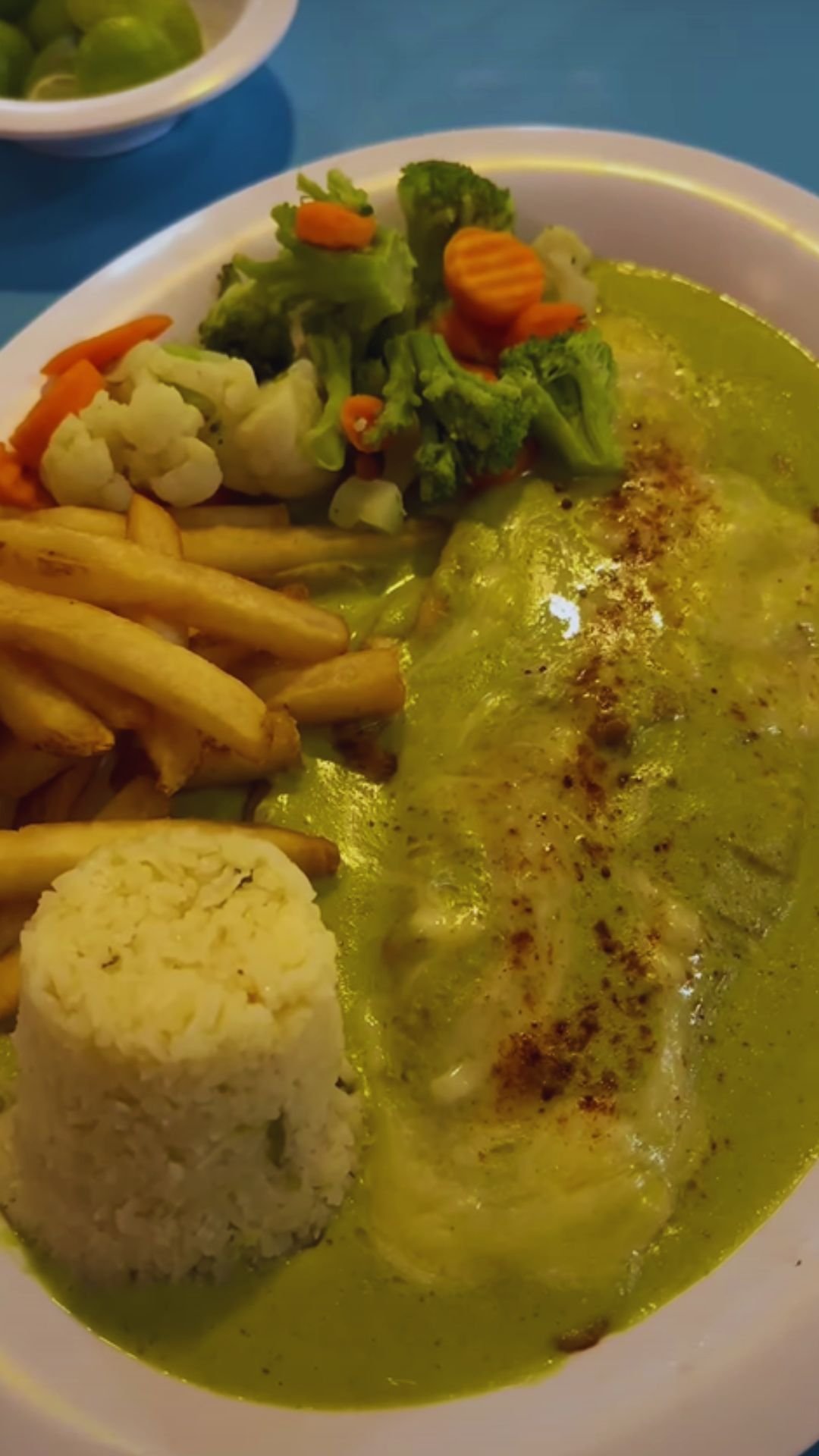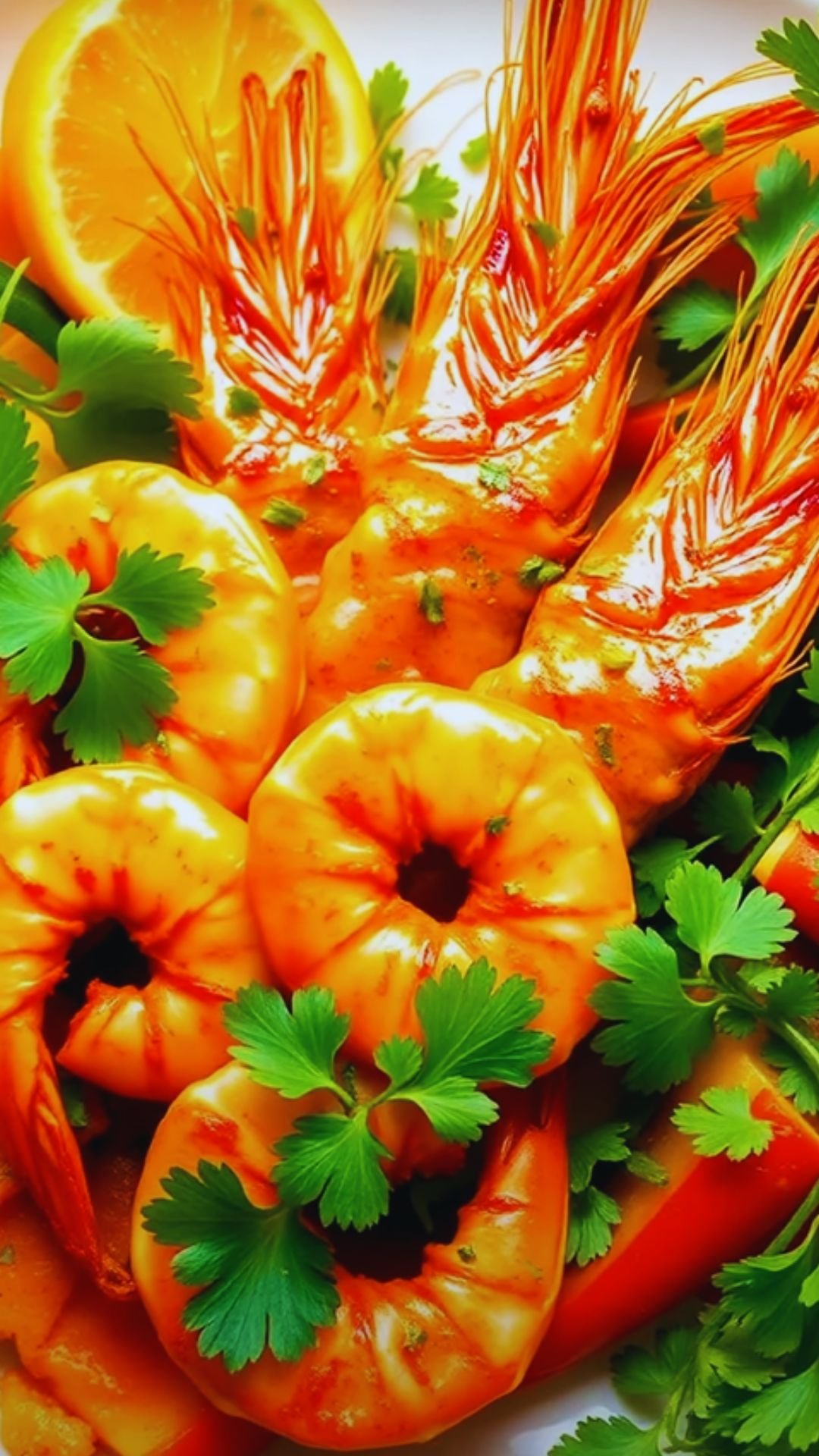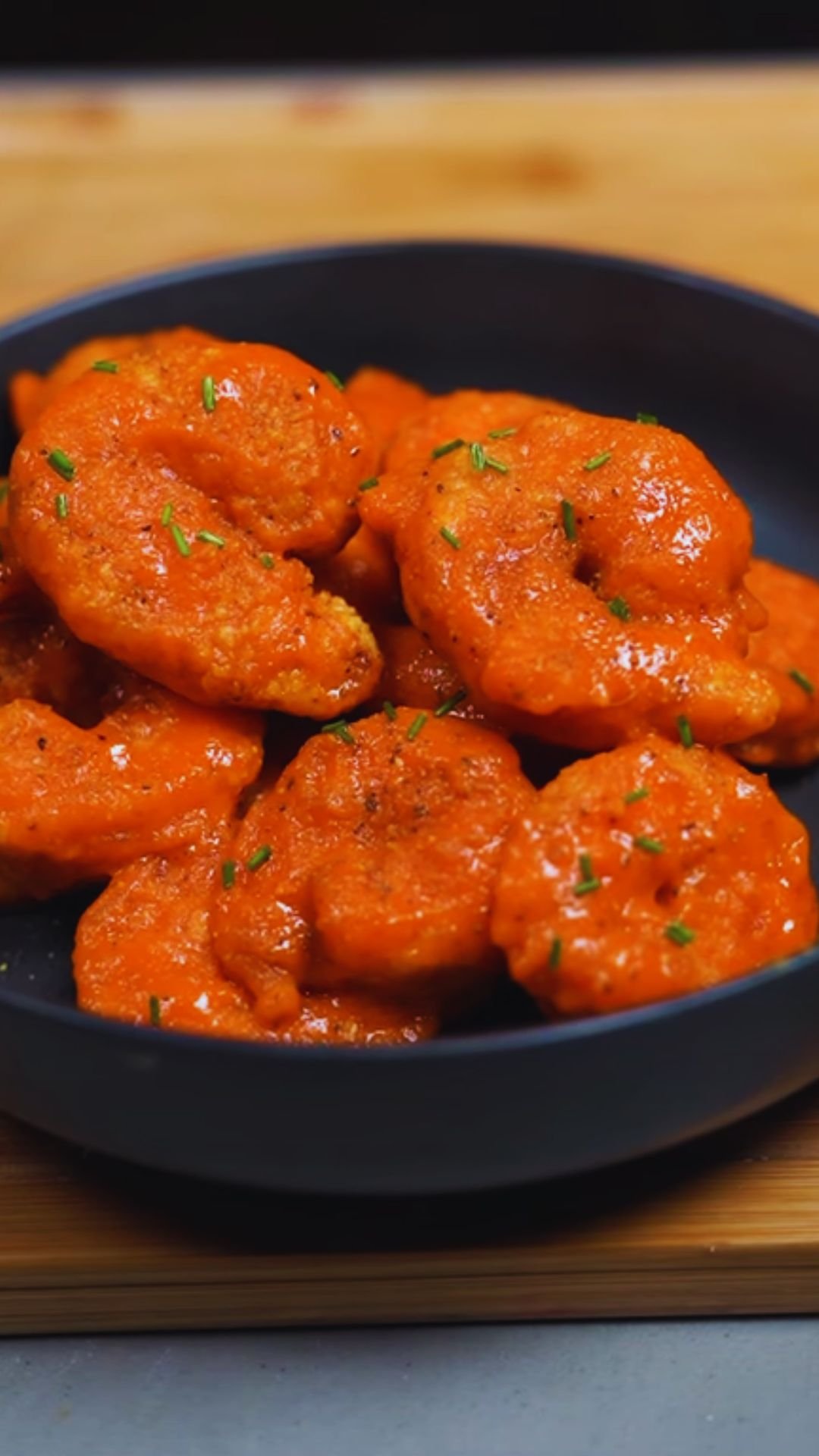If you’re looking for a delicious dish that combines the ocean’s bounty with the rich flavors of Mexican cuisine, you’ve come to the right place. Today, I’m sharing one of my all-time favorite Sinaloan dishes: Shrimp in Culichi Salsa. This creamy, flavorful dish hails from the coastal state of Sinaloa, Mexico, and features succulent shrimp bathed in a velvety green sauce made from roasted poblano peppers, cream, and a blend of aromatic herbs.
I first tasted this incredible dish during my travels through northwestern Mexico, and I was instantly hooked. The combination of fresh seafood with the slightly spicy, utterly creamy culichi sauce creates a flavor profile that’s both comforting and exciting. Since that memorable meal, I’ve perfected my own version that I’m thrilled to share with you today.
What is Culichi Salsa?
Before diving into the recipe, let’s understand what makes culichi salsa so special:
Culichi : A term referring to people from Culiacán, the capital city of Sinaloa, Mexico. The sauce is named after the city where it originated.
Salsa Verde Cremosa : Another name for culichi sauce, meaning “creamy green sauce” in Spanish.
Roasted Poblanos : The backbone of the sauce, providing a mild heat and distinctive smoky flavor.
Crema Mexicana : The dairy component that gives the sauce its signature creaminess.
This sauce represents the perfect fusion of indigenous Mexican ingredients with European dairy influences, creating something truly unique to Sinaloan cuisine. While it’s commonly paired with seafood, particularly shrimp, you’ll also find culichi sauce used with chicken, beef, or as a topping for enchiladas and other Mexican favorites.
Ingredients: The Building Blocks of Flavor
For this recipe, I’ve carefully selected ingredients that balance authenticity with accessibility. Here’s what you’ll need:
For the Culichi Salsa:
- 4 poblano peppers
- 2 jalapeño peppers (seeds removed for less heat if preferred)
- 1 large white onion, quartered
- 4 cloves garlic, peeled
- 1 bunch fresh cilantro (about 1 cup packed)
- 1 cup Mexican crema or heavy cream
- 1 cup chicken broth
- 8 oz cream cheese, softened
- 1 tablespoon butter
- 1 teaspoon ground cumin
- 1 teaspoon dried oregano (preferably Mexican)
- Salt and freshly ground black pepper to taste
For the Shrimp:
- 2 pounds large shrimp (21-25 count), peeled and deveined
- 2 tablespoons olive oil
- 4 cloves garlic, minced
- 1 lime, juiced
- 1 teaspoon salt
- ½ teaspoon freshly ground black pepper
- ½ teaspoon ground cumin
For Serving:
- 2 cups cooked white rice
- Lime wedges
- Fresh cilantro, chopped
- Avocado slices
- Warm tortillas
Nutritional Profile
For those who are conscious about their nutritional intake, here’s a breakdown of what this dish offers per serving (approximate values for a main course portion):
| Nutrient | Amount | % Daily Value* |
|---|---|---|
| Calories | 485 | – |
| Total Fat | 28g | 36% |
| Saturated Fat | 14g | 70% |
| Cholesterol | 255mg | 85% |
| Sodium | 1150mg | 50% |
| Total Carbohydrate | 24g | 9% |
| Dietary Fiber | 3g | 11% |
| Sugars | 3g | – |
| Protein | 36g | 72% |
| Vitamin A | – | 30% |
| Vitamin C | – | 45% |
| Calcium | – | 15% |
| Iron | – | 20% |
*Based on a 2,000 calorie diet
Equipment You’ll Need
Having the right tools at hand will make preparing this dish much easier:
- Baking sheet or cast iron skillet (for roasting peppers)
- Blender or food processor
- Large skillet or sauté pan
- Medium saucepan
- Cutting board and sharp knife
- Measuring cups and spoons
- Cooking tongs
- Wooden spoon or spatula
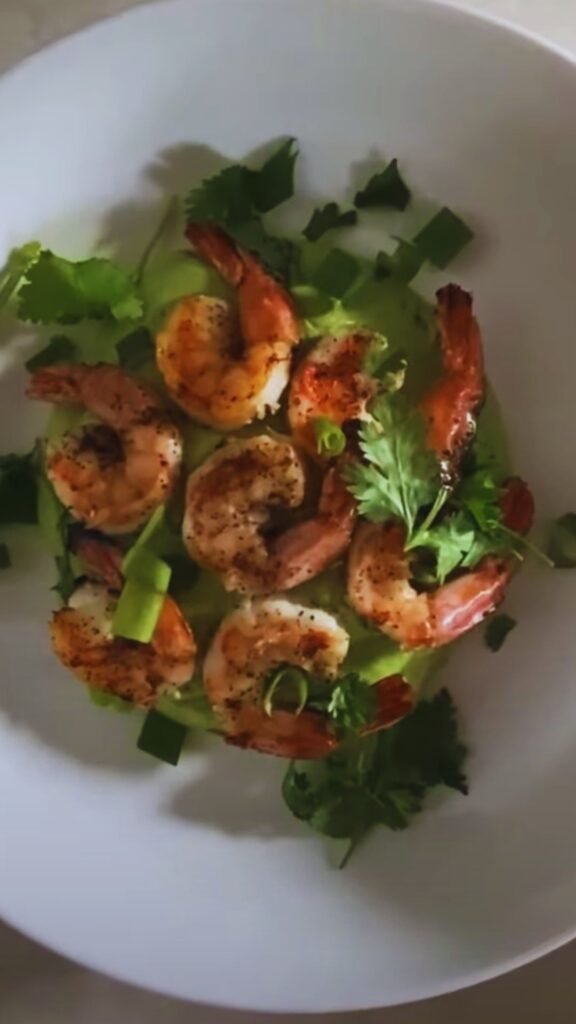
Step-by-Step Cooking Instructions
Let’s break down the cooking process into manageable steps:
Preparing the Culichi Salsa
- Roast the peppers and vegetables:
- Preheat your broiler to high.
- Place poblano peppers, jalapeños, quartered onion, and garlic cloves on a baking sheet.
- Broil for 5-7 minutes, then turn and broil for another 5-7 minutes until the skin of the peppers is charred and blistered.
- Remove from the oven and place the poblanos in a plastic bag or covered bowl for 10 minutes (this makes them easier to peel).
- Once cooled, peel the skin from the poblanos, remove the stems and seeds.
- Blend the sauce:
- In a blender, combine the roasted vegetables, cilantro, cream cheese, Mexican crema, and chicken broth.
- Blend until completely smooth and velvety, about 2-3 minutes.
- Cook the sauce:
- In a medium saucepan, melt the butter over medium heat.
- Pour in the blended sauce mixture.
- Add cumin and oregano, then season with salt and pepper to taste.
- Simmer on low heat for about 15-20 minutes, stirring occasionally, until the sauce thickens slightly.
- If the sauce becomes too thick, add a bit more chicken broth to reach your desired consistency.
Preparing the Shrimp
- Marinate the shrimp:
- In a bowl, combine shrimp with olive oil, minced garlic, lime juice, salt, pepper, and cumin.
- Toss to coat evenly and let sit for 10-15 minutes (not longer, as the lime juice will begin to “cook” the shrimp).
- Cook the shrimp:
- Heat a large skillet over medium-high heat.
- Add the marinated shrimp in a single layer (work in batches if necessary to avoid overcrowding).
- Cook for about 2 minutes per side, until they turn pink and opaque.
- Remove from heat immediately to prevent overcooking.
Bringing It All Together
- Combine the shrimp and sauce:
- Gently fold the cooked shrimp into the culichi sauce.
- Simmer for an additional 2-3 minutes to allow the flavors to meld.
- Taste and adjust seasoning if necessary.
- Serve:
- Spoon the shrimp in culichi sauce over white rice.
- Garnish with fresh cilantro, lime wedges, and avocado slices.
- Serve with warm tortillas on the side.
Regional Variations
The beauty of Shrimp in Culichi Salsa lies in its adaptability. Throughout Mexico, you’ll find different interpretations of this classic dish:
Sinaloa Style (Traditional)
The version I’ve shared today is most closely aligned with the traditional preparation from Sinaloa, featuring poblano peppers as the primary flavor base with a generous amount of cream.
Nayarit Variation
In neighboring Nayarit, you might find culichi sauce made with tomatillos added to the blend, giving it a slightly tangier profile while maintaining the creamy texture.
Modern Adaptations
Some contemporary versions incorporate spinach or avocado into the sauce for added nutrition and an even creamier texture. I’ve tried both and can attest they make delicious variations while staying true to the spirit of the dish.
Cooking Tips for Perfect Results
After preparing this dish countless times, I’ve discovered some secrets to making it absolutely perfect:
- Don’t skip the roasting step: Roasting the peppers and vegetables is crucial for developing the deep, smoky flavor that makes culichi sauce special.
- Strain for ultimate creaminess: For an ultra-smooth sauce, strain the blended mixture through a fine-mesh sieve before cooking it down.
- Watch your shrimp cooking time: Shrimp cook incredibly quickly, and overcooked shrimp become rubbery. Cook just until they turn pink and opaque – about 2 minutes per side for large shrimp.
- Sauce consistency matters: The ideal culichi sauce should coat the back of a spoon but still flow smoothly. If it’s too thick, thin with broth; if too thin, simmer a bit longer.
- Fresh cilantro is non-negotiable: While dried herbs work in a pinch for some recipes, fresh cilantro is essential for the bright, herbaceous notes in authentic culichi sauce.
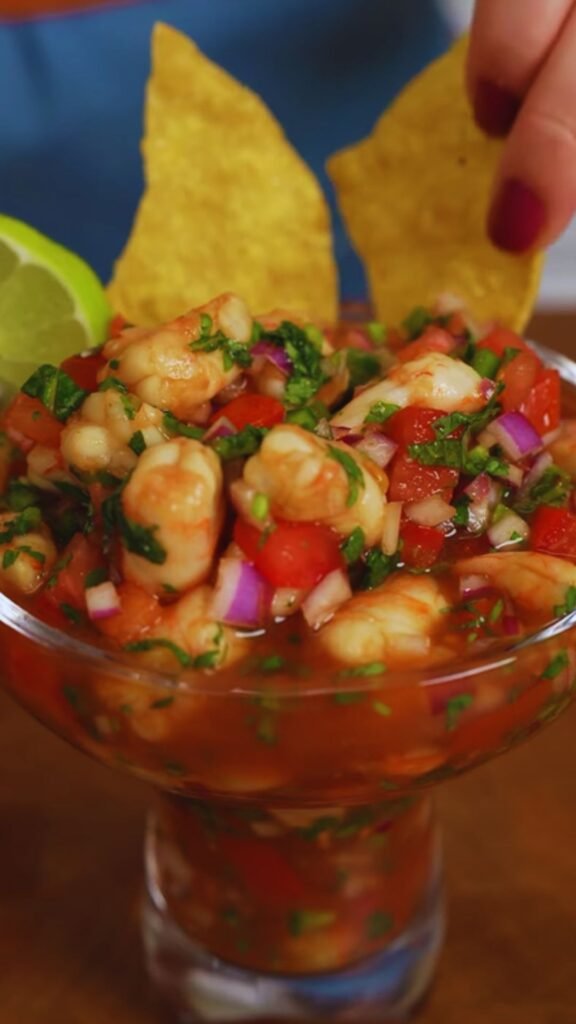
Serving Suggestions
I love creating a complete dining experience around this dish. Here are my favorite ways to serve Shrimp in Culichi Salsa:
Side Dishes
- Mexican Rice: The sauce is perfect over a bed of fluffy Mexican rice with its tomato-infused flavor.
- Black Beans: Simple black beans seasoned with epazote make a perfect accompaniment.
- Grilled Vegetables: Zucchini, corn, and bell peppers lightly charred on the grill complement the creamy sauce wonderfully.
Presentation Ideas
- Family Style: Serve in a large, shallow bowl with rice on the bottom and the shrimp and sauce on top, garnished generously with fresh herbs.
- Individual Portions: For a more elegant presentation, create individual plates with a ring of rice, shrimp arranged in the center, and sauce drizzled artfully over the top.
- Taco Bar: Set up a build-your-own taco station with the shrimp in culichi sauce as the star protein, alongside warm tortillas and all the fixings.
Non-Alcoholic Pairings
- Agua de Jamaica (Hibiscus Tea): The tangy-sweet flavor cuts through the richness of the dish.
- Horchata: This cinnamon-rice drink provides a sweet counterpoint to the savory, slightly spicy flavors.
- Cucumber-Lime Agua Fresca: Refreshing and light, perfect for balancing the creamy sauce.
Make-Ahead and Storage Tips
One of the things I love about this dish is how well it works for meal prep:
Make-Ahead Options
- Culichi Sauce: Can be made up to 3 days ahead and stored in the refrigerator. Reheat gently before adding the shrimp.
- Prep Vegetables: Roast the peppers and vegetables a day ahead, then blend and finish the sauce when ready to serve.
Storage Guidelines
- Refrigeration: Store leftovers in an airtight container for up to 2 days.
- Freezing: The sauce alone freezes beautifully for up to 3 months. Freeze in ice cube trays, then transfer to freezer bags for easy portioning.
- Reheating: Warm gently over low heat, adding a splash of cream or broth if needed to restore the creamy consistency.
Quality Notes
- The sauce may separate slightly upon refrigeration. Whisk well while reheating to recombine.
- For best flavor and texture, I don’t recommend freezing the dish with shrimp already in the sauce, as the shrimp can become tough when reheated.
Health Adaptations
While the traditional version is undeniably delicious, I understand many people have dietary restrictions or preferences. Here are some adaptations I’ve tested:
Lighter Version
- Substitute half the cream with unsweetened almond milk mixed with a tablespoon of cornstarch.
- Use low-fat cream cheese instead of full-fat.
- Reduce butter to 1 teaspoon and use olive oil for the remainder.
Dairy-Free Alternative
- Replace cream with full-fat coconut milk.
- Use dairy-free cream cheese (cashew-based works well).
- Add 1 tablespoon of nutritional yeast for a cheesy flavor without the dairy.
Lower-Carb Option
- Serve over cauliflower rice instead of white rice.
- Add extra vegetables like spinach or zucchini to the dish.
- Use almond flour as a thickener instead of reducing with starch-heavy ingredients.
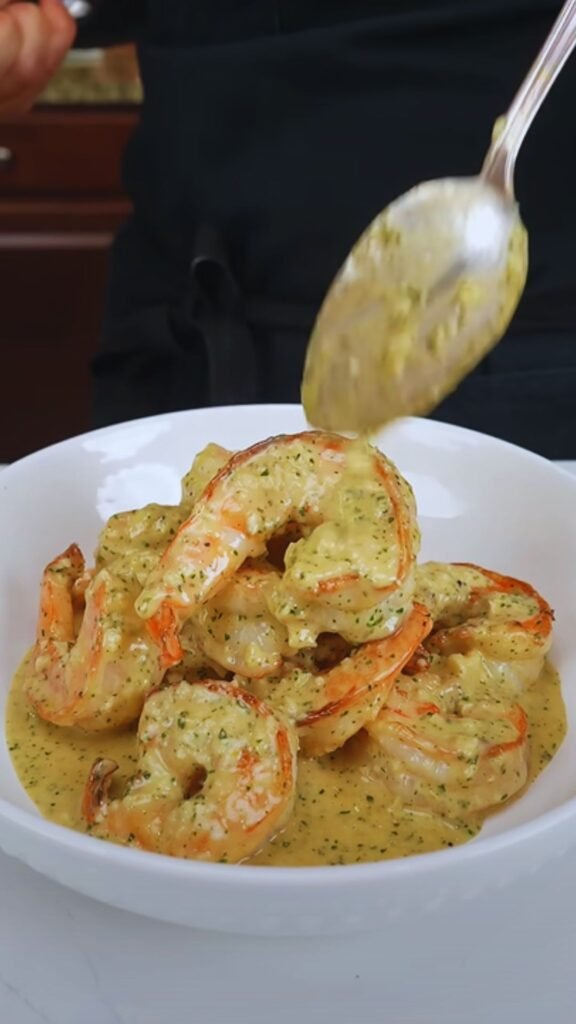
Cultural Context and History
I find that understanding the cultural roots of a dish enhances the appreciation of it:
Culichi sauce is deeply connected to Sinaloa’s fusion cuisine, where Spanish colonial influences merged with indigenous Mexican ingredients and techniques. The state’s proximity to the coast ensures abundant seafood, while its fertile valleys provide fresh produce year-round.
The dish likely evolved during the 19th century when European dairy techniques became more widespread in Mexican cooking. The combination of indigenous chili peppers with European dairy created this unique sauce that has become emblematic of Sinaloan cuisine.
Today, you’ll find Shrimp in Culichi Salsa served in restaurants throughout Mexico and the southwestern United States, particularly in areas with strong Sinaloan influences.
Frequently Asked Questions
Over the years, I’ve received many questions about this recipe. Here are the most common ones:
Q: Can I use canned poblano peppers instead of roasting fresh ones? While fresh is always best, canned poblanos will work in a pinch. Drain them well and use about 2 cups of chopped peppers. The flavor won’t be as deep as freshly roasted, but it’s a reasonable shortcut when time is limited.
Q: How spicy is this dish? With poblanos as the base, the heat level is generally mild to medium. Removing the seeds and membranes from the jalapeños will keep it on the milder side. If you want more heat, leave some seeds in or add a serrano pepper to the mix.
Q: What can I substitute for Mexican crema? A mixture of 3/4 cup sour cream with 1/4 cup heavy cream makes a good substitute. Alternatively, crème fraîche works well too.
Q: Can I use frozen shrimp? Absolutely! Just make sure to thaw them completely and pat dry before marinating and cooking. I often keep frozen shrimp on hand specifically for this recipe.
Q: Is this dish gluten-free? Yes, the recipe as written is gluten-free. Just be sure to check your chicken broth label, as some brands may contain gluten.
Q: Can I make this with chicken instead of shrimp? Definitely! Boneless, skinless chicken breast or thighs cut into bite-sized pieces work wonderfully with culichi sauce. Cook the chicken thoroughly before adding to the sauce.
Q: How do I know when the shrimp are perfectly cooked? Perfectly cooked shrimp will form a “C” shape and turn from translucent gray to opaque pink and white. If they curl into a tight “O” shape, they’re overcooked.
Final Thoughts
Shrimp in Culichi Salsa represents what I love most about Mexican coastal cuisine – it’s bold, flavorful, and highlights fresh ingredients in a way that feels both indulgent and nourishing. The creamy sauce cradles perfectly cooked shrimp, creating a dish that’s impressive enough for special occasions yet simple enough for a weeknight dinner when you want something extraordinary.
What I find most compelling about this dish is how it brings together seemingly contrasting elements – the heat of chilies with cooling cream, the earthiness of roasted vegetables with the sweet brininess of shrimp – and harmonizes them into something greater than the sum of its parts.
I encourage you to try this recipe and experience the magic of Sinaloan cuisine for yourself. Whether you stick to the traditional preparation or explore one of the variations, I’m confident this dish will earn a place in your regular rotation, just as it has in mine.
So gather your ingredients, fire up the broiler, and prepare for a culinary journey to Mexico’s Pacific coast. Your taste buds will thank you!
